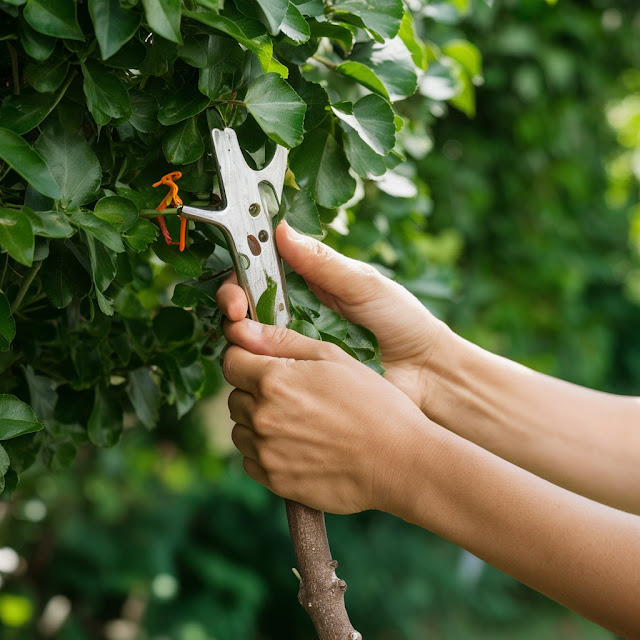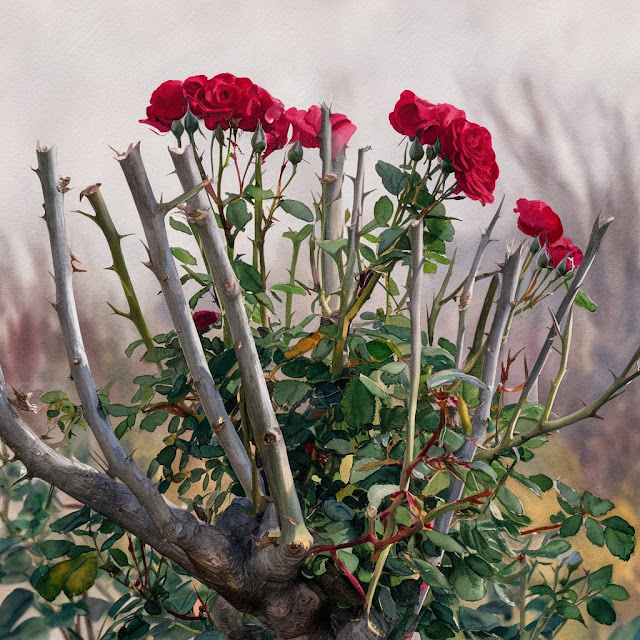Pruning Technique
Tools of the Trade
Pruning is an essential skill in plant management; it is achieved using appropriate tools that are selected based on the job to be done. These possessive implements are called the “tools of trade” are essential for influencing the health, beauty, and output of garden, orchards and landscapes.
Among pruning tools, there are none that top the list of hand pruner, also known as secateurs. Both are handheld tools, but they are categorized in bypass and anvil, based on the kind of pruning required. Bypass pruners have blade structures that are like scissors, where the blades as pass beside one another, for ideal live stem and branches cutting. Anvil pruners have another blade that shaves against a flat plate which is appropriate for deadwood and other more stubborn branches. The kind of hand pruner to use therefore depends with the kind of work that needs to be done as well as the size of branches that need to be trimmed. Grow Vegatable
For bigger branches and truculuous wood, the pruning saws cannot be replaced for the job unlike the other tools that may be used in trimming branches and trees in a more efficient manner. Pruning saws can be classified in many types depending with its size and structure such as the folding saw used when the pruning saw is not in use and the curved bladed pruning saw where the cutting space is restricted. Long ago it was established that gardeners were able to smoothly trim through comparatively bulky branches due to the pointed heads of scissors and well-contoured handles. There are several factors to consider when selecting a pruning saw; these are; the length of the blade, the pattern of the teeth ( fine/grained or coarse) and the capability to interchange blades to lengthen its usability.
Pruning Techniques for Trees
Excluding practices of trees are important activities that are useful in the management of trees with regard to their structure, health and even appearance. Thus it can enhance right growth, increase the amount of air around the tree, decrease the possibility of disease infections, and aesthetical improvement of trees in the landscapes, orchards, and urban cities.
Yet, one of the main purposes of pruning trees is the desire to keep their structure and form intact. This involves the pruning of the tree where unnecessary branches that are dead, diseased or branches that are broken are pruned to enhance the tree’s wellbeing or to reduce on any dangers that the tree may pose. The branches that arborists and gardeners remove during the process support healthy growth of the trees since the resources will be well utilized by removing these branches and leading to the strengthening of the tree’s structures that enable it to withstand harsh and unfavourable conditions in the environment.
A second common type of pruning is crown thinning in which limbs of limited size are removed at various locations in the tree’s crown. This enables more light penetration and air flow within the crown and hence produce strong and well spread branches. Crown thinning is most useful on the trees with full or more crown density as this reduces the chances of a fungus attack or invasion by pests and at the same time improves the tree’s appearance.
There is another type of pruning that involves crown raising, this technique is widely used to clear obstacles such as pedestrians, vehicles or structures in urban regions. This is a technique in which the branches at the bottom are pruned in a bid to open up more space beneath the tree crown. Therefore, by lifting the crown, arborists open up a more pleasant appearance adding safety and ease of access to the public areas.
However, crown reduction pruning is more targeted because it seeks to lessen the size or spread of the tree’s crown. This technique is commonly applied for trees that have been allowed to grow beyond their possible indicators.
Yet, one of the main purposes of pruning trees is the desire to keep their structure and form intact. This involves the pruning of the tree where unnecessary branches that are dead, diseased or branches that are broken are pruned to enhance the tree’s wellbeing or to reduce on any dangers that the tree may pose. The branches that arborists and gardeners remove during the process support healthy growth of the trees since the resources will be well utilized by removing these branches and leading to the strengthening of the tree’s structures that enable it to withstand harsh and unfavourable conditions in the environment.
A second common type of pruning is crown thinning in which limbs of limited size are removed at various locations in the tree’s crown. This enables more light penetration and air flow within the crown and hence produce strong and well spread branches. Crown thinning is most useful on the trees with full or more crown density as this reduces the chances of a fungus attack or invasion by pests and at the same time improves the tree’s appearance.
There is another type of pruning that involves crown raising, this technique is widely used to clear obstacles such as pedestrians, vehicles or structures in urban regions. This is a technique in which the branches at the bottom are pruned in a bid to open up more space beneath the tree crown. Therefore, by lifting the crown, arborists open up a more pleasant appearance adding safety and ease of access to the public areas.
However, crown reduction pruning is more targeted because it seeks to lessen the size or spread of the tree’s crown. This technique is commonly applied for trees that have been allowed to grow beyond their possible indicators.
Shrub Pruning
Shrub pruning is a crucial task in gardening, landscaping, and arboreto crops aimed at the maintenance of shrubs’ health, formation, and aesthetics. This is a practice of cultivating some shrubs in such a way that their beauty, rate of flowering and perfect size are improved. Firstly, dead, diseased or damaged branches which if left on the shrub can contribute to the diseases and pests infections must be pruned off impressing the beauty of the plants and at the same time boosting plant health. Also, selective pruning is important in determining the form of the shrub because it is meant to be shaped and be upright and well proportioned in the environment it is placed in. Timing of the pruning plays an important role, thus the pruning is done in winter or right after the blooming period of specific shrub. Cleansing the pruning tools before and throughout pruning and pruning at the correct time of the year, expert pruners avoid damaging the shrub and get the new growth that they want. Lastly, shrub pruning is an art of eradicating unnecessary growth which has a positive influence on the total quality, strength as well as aesthetic value of shrubs in numerous landscapes that enhance outdoor environments with healthy and well trimmed greens.
Pruning Rose
Rosa pruning is one activity that cannot be described simply as a science, but rather as an art that is remarkably central to the functional health and potential flower productivity of rose varieties beloved in horticulture. Another plant that requires frequent pruning is roses since their main attraction is the appearance and the smell, frequent pruning helps the plant to grow well, initiates quality air circulation and improves the total appearance of the plant.
Thus, one of the main objectives of pruning roses, first and foremost, it is necessary to clear the bush of dry, sick, or otherwise injured branches. Thus, gardeners cut out these branches eliminating the possibility of diseases spreading and promoting better investment of energy in growth and flowering of the rose plant. It also entails the elimination of branches that cross or touch other branches in order to produce wounds which in turn lead to pest or infections.
One of the essential requirements of rose pruning is training, the aim of which is the plant structure with the least number of branches and with good spreading and angles. This also enhances the flow of air and light to penetrate the canopy a factor that deters fungal diseases such as the powdery mildew and black spot. Correct shaping also helps in the development of strong side shoots that can help sustain many flowers.
Thus, one of the main objectives of pruning roses, first and foremost, it is necessary to clear the bush of dry, sick, or otherwise injured branches. Thus, gardeners cut out these branches eliminating the possibility of diseases spreading and promoting better investment of energy in growth and flowering of the rose plant. It also entails the elimination of branches that cross or touch other branches in order to produce wounds which in turn lead to pest or infections.
One of the essential requirements of rose pruning is training, the aim of which is the plant structure with the least number of branches and with good spreading and angles. This also enhances the flow of air and light to penetrate the canopy a factor that deters fungal diseases such as the powdery mildew and black spot. Correct shaping also helps in the development of strong side shoots that can help sustain many flowers.
Pruning Fruit Trees
Tree pruning is one of the basic practices that should be carried out in fruit trees since it determines the standard growth, productivity and life span of the trees. This form of tree management involves removal of some branches and shoots to influence the structure of the tree, light interception, movement of air and fruiting.
Some of the reasons for pruning fruit trees includes the first and foremost to set the stem or framework branches that will support the future crops. Structural branches should be well-spaced and directed away from each other as this enhances the energy distribution of the tree while developing strong limbs to support the fruits without turning to be misc Opcode:. Pruning also eradicate side branches that are undeniably pale, numerous, or intersecting; making the chances of disease attack low, and tree growth excellent.
If there is one thing that should be of paramount concern when pruning fruit trees, it is the timing because this depends on the kind of tree and local climate. In general, winter pruning is considered the best one for most fruit trees, especially when it is carried out during the winter, because all growth is damaged and tree’s shape is easier to see. This is also a time when the disease pressure is low and quick healing of the pruning wounds before the emergence of new growth in spring season is promoted.




.png)


